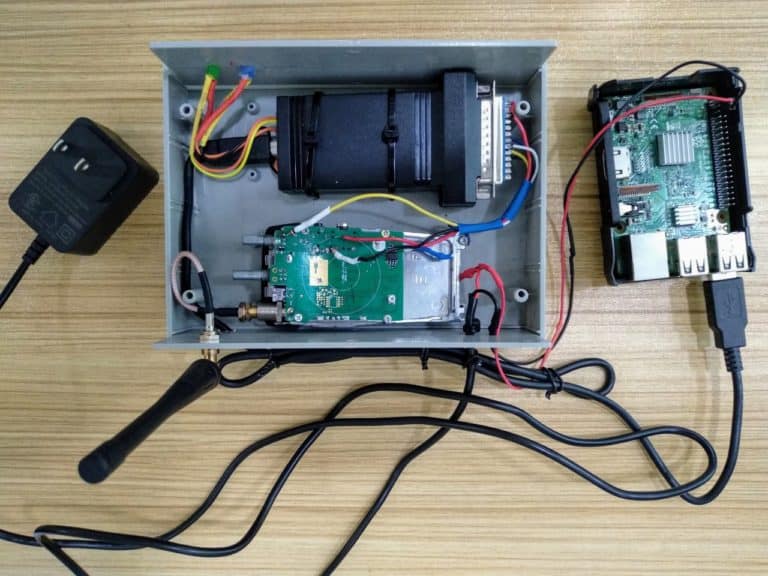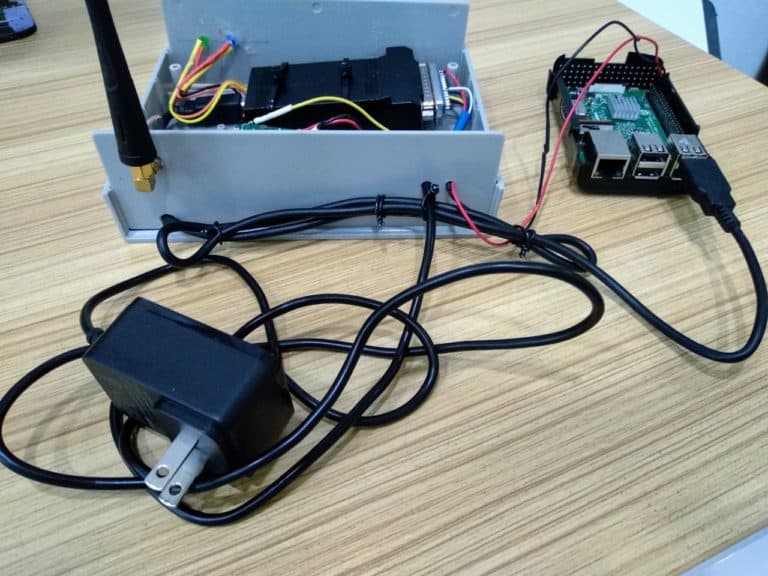Barebones Allstar Node.
This node is about as easy to construct as it gets, using the DMK URI interface means that you avoid the fiddly though by no means impossible soldering required by the CM108 sound fob approach.
Another advantage is that with this design you are not tying up the Raspberry Pi 3b within the project. It just takes a few seconds to detach it at any time. And the same applies to the DMK URI, it can easily be removed.
Though of very simple design I am getting very good audio reports from this node.
The excellent DMK URI interface is available from this site: LINK
The wiring points on the DB25 conncector, please visit my ” More ” section for more details: LINK
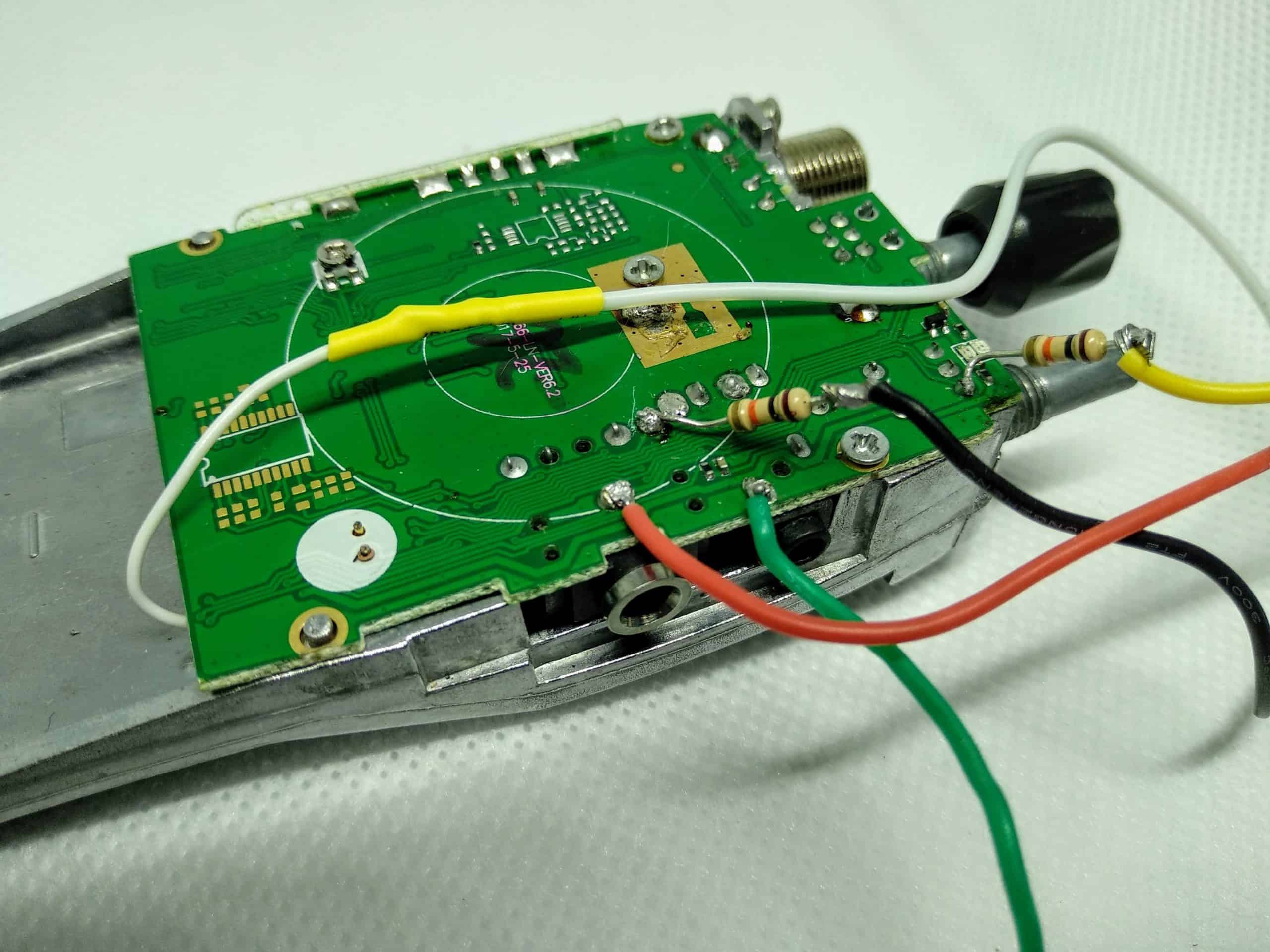
The connection points on the Baofeng 888s. Please note that the green wire which is an earth point is not used in this project, please ignore it. This design draws the ground connection from the DB25 connector and this is just attached to the screw at the bottom of the 888s, though other earth points are available.
The resistors are both 10k.
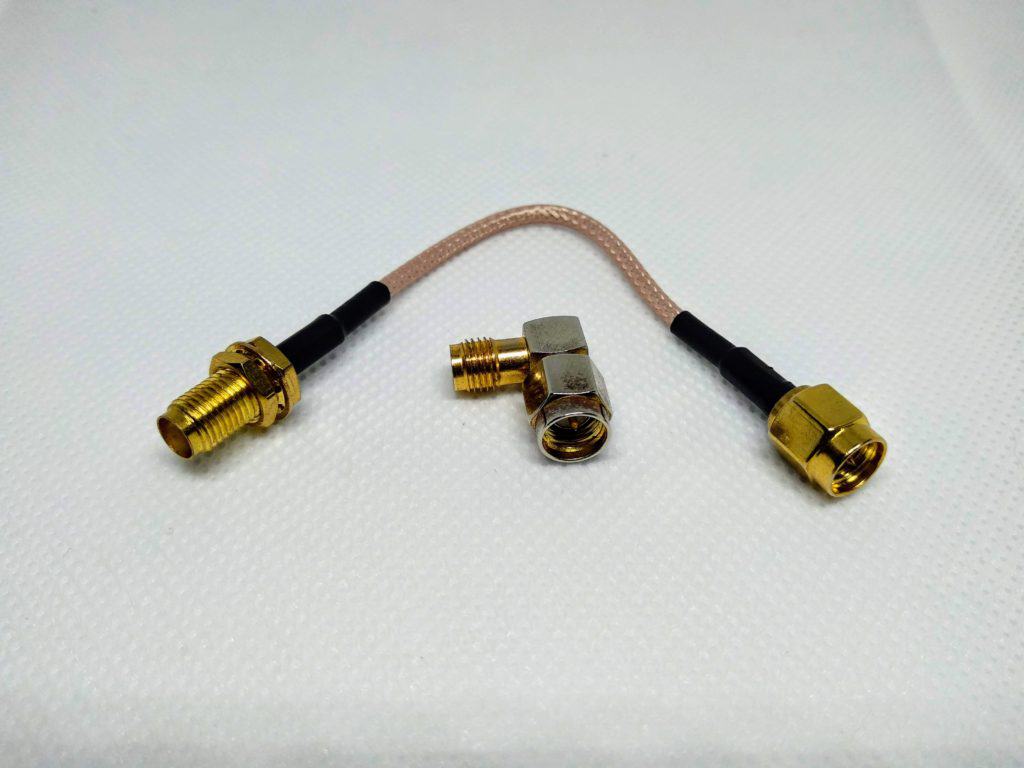
The aerial assembly is shown above, this is a 10 cm SMA male to female lead plus an SMA male to female right angle 90-degree adapter. These are available from eBay, Amazon and elsewhere.
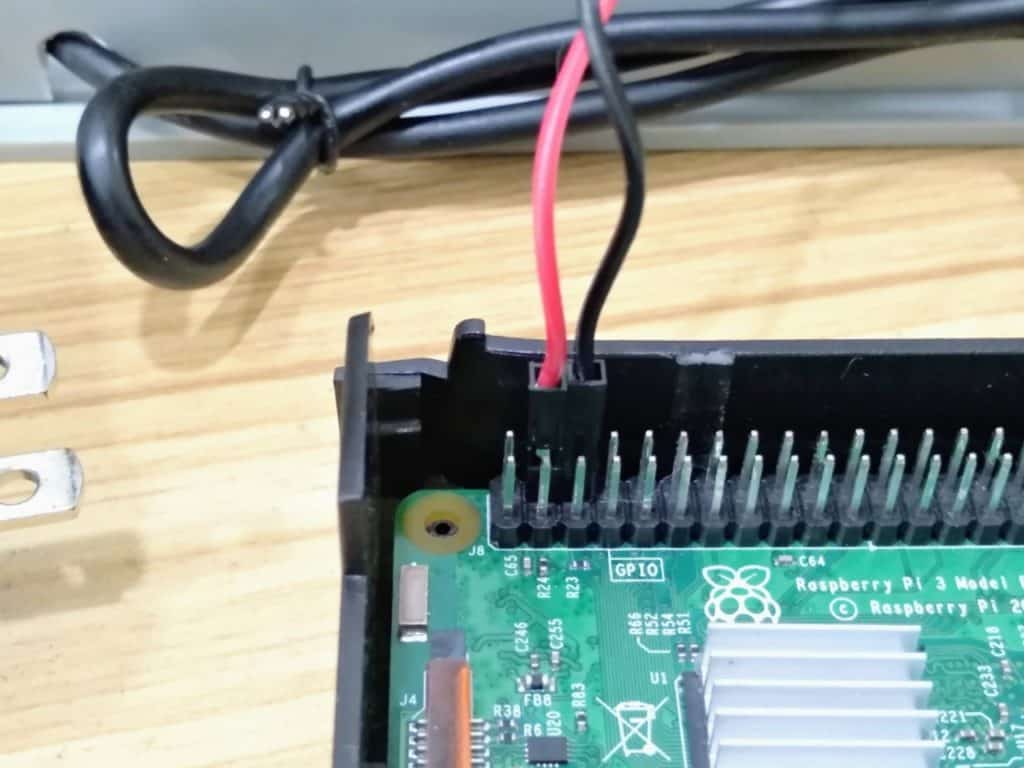
Construction details
Step One: Modify a Baofeng 888s radio as per the instructions elsewhere on this site.
Step Two: Carry out the low power mode as detailed in my ” More ” section. Just keep things simple, remove the inductor to the right of the final stage transistor. This will take you about 10 seconds. LINK
Step Three: Set up the power supply, for this project I have used a Raspberry Pi 4 power supply. Cut off the connector and bare the wires, then one positive lead and one negative lead go to the Raspberry Pi 3 B, and a branch from the positive lead goes to the diode supplying the positive power input to the Baofeng 888s, that’s all you need. LINK
Step four: Wire up the DB25 connector as per this diagram, { The casing is not required } the ground lead just fixes to the screw at the very bottom of the Baofeng 888s: LINK
Step Five: Then connect up the DB25 connector to the Baofeng 888s as per the photo above, the resistors are both 10K.
Finally the USB lead from the DMK URI goes to the Raspberry Pi.
This node is built in a plastic electronic project box { 130 x 170 x 55mm } from eBay. I have used this as I have a few of them lying about. That said it would be very easy to fit the whole project including the Raspberry Pi 3 into a larger project box. However, I have an idea that using a Raspberry Pi separated from the rest of the node might lead to better audio quality.
The indicator lights: I guess no Allstar node is complete without indicator lights on the front. It is an easy matter just to solder on a couple of wires to extend the LEDs on the DMK URI.
Software: Once you have completed the hardware construction you can move on to installing the required software on to the SD card in the Raspberry Pi to get your node up and running. While there are other options I find that Hamvoip software is your easiest option at the moment.
Details in my More section.


